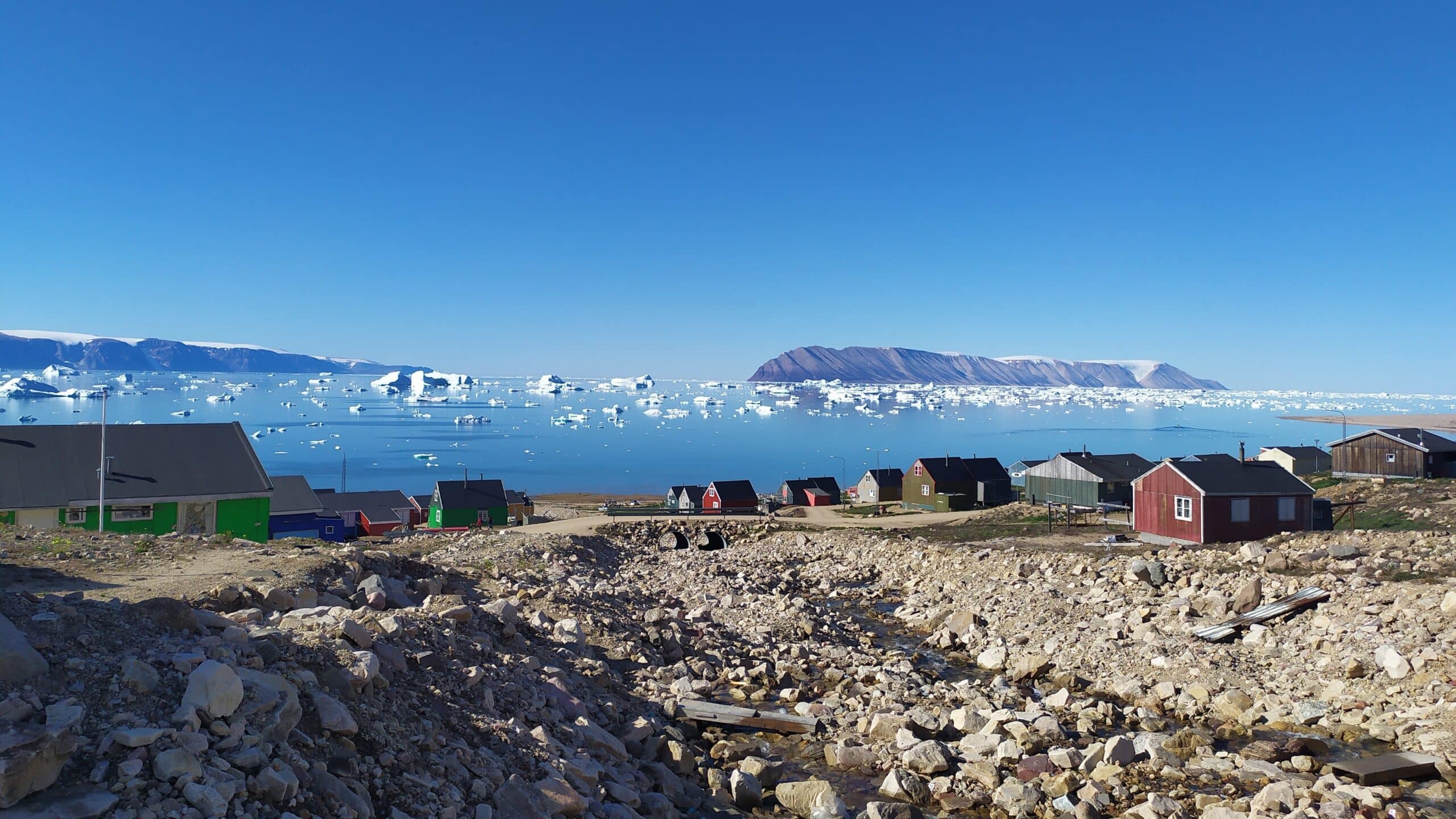What does the 2023 "Letter of Intent for Cooperation on the Pikialasorsuaq" mean for the Inuit of the region?

The Inughuit settlement of Qaanaaq (Greenland), largely dependent on Pikialasorsuaq’s biological productivity. Photo: Apostolos Tsiouvalas
The North Water Polynya is a polynya between Greenland and Nunavut in northern Baffin Bay that constitutes the most biologically productive region within the Arctic Circle and has historically been vital for the subsistence of all adjacent Inuit communities. The Polynya, known as Pikialasorsuaq in Greenlandic and Sarvarjuaq in Inuktitut, has historically served as an important bridge for the Inuit of Canada and Greenland to pursue cross-border traditional activities, and it has led to the development of important spiritual and cultural bonds among the Inuit communities of both sides. In recent decades, the situation, however, has changed substantially, with the Pikialasorsuaq ecosystem facing challenges posed by climate change and rising human activity in the region. In addition, navigating international borders within the Pikialasorsuaq region has gradually become more difficult for the Inuit of both sides after the delimitation of the maritime border between Canada and the Kingdom of Denmark (in relation to Greenland), as well as due to increased security regulations in the region.
On October 19, 2023, on the margins of the Arctic Circle Assembly, the Minister of Fisheries, Oceans and the Canadian Coast Guard and the Minister of Agriculture, Self-Sufficiency, Energy and Environment of Greenland signed a Letter of Intent for Cooperation on the Pikialasorsuaq, which seems to signify an important step towards the collaboration of Canada and Greenland with regards to the Pikialasorsuaq and pertinent Inuit communities. A Letter of Intent (LOI) is a written document prepared when two parties have reached a mutual understanding on an issue but have not fully detailed out all the specifics. This document is often presented before a final legal agreement, meaning a LOI itself lacks binding force. Nevertheless, it serves as an expression of political commitment between the parties and outlines the terms they intend to subsequently adhere to.
The 2023 LOI acknowledges all previous bilateral agreements and joint efforts (including single-species management) with respect to the Pikialasorsuaq area and provides for the establishment of a “joint Pikialasorsuaq steering committee” across Canada and Greenland, with representation from Inuit and national governments on both sides. As of the LOI, the mandate of the Steering Committee would be to “develop instruments and common foundations for management of the area”. While further details about the actual scope of the wording of this objective are not provided in the LOI, it seems that this objective resonates with the first recommendation of the 2017 Pikialasorsuaq Commission report that suggested the establishment of a common Inuit-led management authority for the area. Allowance of transboundary activities for the Inuit of Pikialasorsuaq could, however, not find any legal resonance with the existing development in place, as the LOI’s scope is generally broad and does not touch upon any such issues. This is further manifested through Denmark’s lack of participation in the LOI. Considering that for any question dealing with sovereignty, security, delimitation or border issues the Kingdom holds jurisdiction, Denmark should also have been involved in signing the LOI, should such a development be aimed at regulating cross-border Inuit activities. However, considering that just about a year before the LOI was signed, the 2022 Hans Island agreement was adopted, which held significant value for Inuit activities in the region, the 2023 LOI represents a second significant intention by public authorities to acknowledge the integrity of Inuit territories.
This contribution introduces the following NCLOS Blog post by Apostolos Tsiouvalas, Reflections on the Letter of Intent for Cooperation on the Pikialasorsuaq: What does it legally mean for the Inuit? (October 31st, 2023). The post discusses in more detail the factual background behind this development and the potential legal implications of the Letter of Intent for the future of Inuit activities adjacent to the Pikialasorsuaq region.